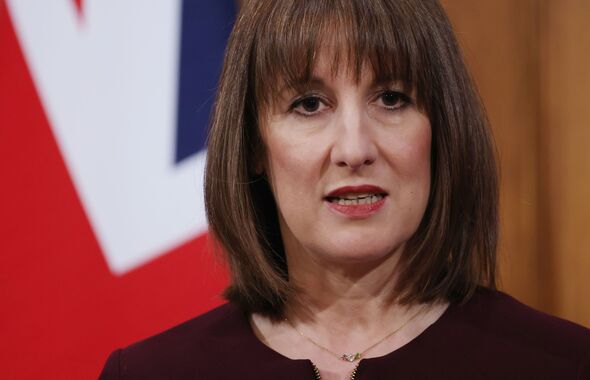
Average house price forecast to rise by £84,000 – see increases in your area (Image: Getty)
Average house prices in the UK are set to rise by a staggering £84,000 over the next five years, according to a new forecast.
With inflation returning to the 2% target and interest rates likely to decrease over the next two years, house prices are expected to resume steady year-on-year growth.
Savills expects the typical property value to reach £442,000 by the end of the five-year period to 2029, from £358,000 currently.
The property advisor expects house prices to increase by 4%, or £14,500, on average next year alone.
The UK housing market is still feeling the effects of the cost-of-living crisis and high mortgage rates. House prices remain 2.3% below their peak in August 2022 in nominal terms, but when adjusted for inflation, they have dropped 10.5% during this period, according to Nationwide and the ONS.

House price growth is expected to gain momentum over the next few years (Image: Getty)
With inflation now back on track, Savills forecasts an 11% rise in real house prices over the next five years, bringing inflation-adjusted prices back to pre-mini-budget levels.
Lucian Cook, head of residential research at Savills, commented: “The direction of mortgage rates has been key to buyer decisions over the past two years, and decreased monthly mortgage costs are now feeding through into improved confidence amongst prospective buyers, prompting the moderate house price growth we have seen over the past few months.
“A steady improvement in affordability should allow for house price growth to gain momentum over the next couple of years. But there is still some potential for a bumpy ride.
“The market will remain sensitive to short-term fluctuations in the cost of debt and changes to property taxation have the potential to cause some short-term disruption.”
Regional performance is largely influenced by where we are in the housing market cycle. According to Savills, the UK housing market has been in the second half of the cycle since 2017, where the more affordable regions in the North and Scotland outperform the UK average, and capacity for growth in London and the South is more limited.

Northern regions are expected to see the biggest house price gains over the next five years (Image: Getty)
However, the Covid pandemic brought about behavioural changes that have disrupted cyclical trends.
Emily Williams, director of research at Savills said: “Lower levels of homeworking and the need to return to commuter hotspots near major employment hubs has driven slightly stronger than expected performance in London over the last 12 months.
“We expect to see some residual impact of the unwinding of the ‘race for space’ in 2025, bringing growth in the South West and East of England below that of the capital.”
Ms Williams added: “But beyond 2025, affordability will have the biggest influence in every region. Despite falling mortgage rates, buyers in London and the South East will still need to borrow more relative to their income and accumulate a bigger deposit to buy, constraining house price growth.”
Savills predict house prices across the country will rise significantly over the next five years with northern regions seeing the biggest gains.
Here are the estate agent’s forecasts for price increases in percentage terms region by region:
- North West, 29.4%
- North East, 28.2%
- Yorkshire and the Humber, 28.2%
- West Midlands, 26.4%
- Scotland, 25.8%
- Wales, 25.2%
- East Midlands, 24.6%
- South West, 21.6%
- East of England, 19.9%
- South East, 17.6%
- London, 17.1%
Transactions are expected to remain slightly below their pre-pandemic average over the next five years, peaking at 1,150,000 in 2028, but the estate agent warns recovery will not be uniform.
Ms Williams said: “Looking ahead we can expect some home movers to continue to hold off on moving until rates settle in 2027, when they will have also benefited from several years of house price growth to build up equity.
“As such, there is potential for a sharp rise in activity among second and third steppers in the second half of our forecast period, as pent-up demand from the period of high interest rates is released.”
Ms Williams also suggested the number of first-time buyers active in the market is expected to stay below pre-pandemic levels, due to a lack of any Government support to replace Help to Buy.
She added: “Increased regulation in the rental sector, combined with the newly increased second-home surcharge, will further dampen demand from both cash and mortgaged buy-to-let investors.”
Savills’s predictions are based on “mainstream” house prices, covering the majority of the housing market. Savills will launch a separate forecast for the prime (the top 1%-2%) property market in December.
Savills said the forecast is also based on second-hand property prices, and new-build prices could perform differently. The research involved uses data from Oxford Economics and the Nationwide Building Society.



















